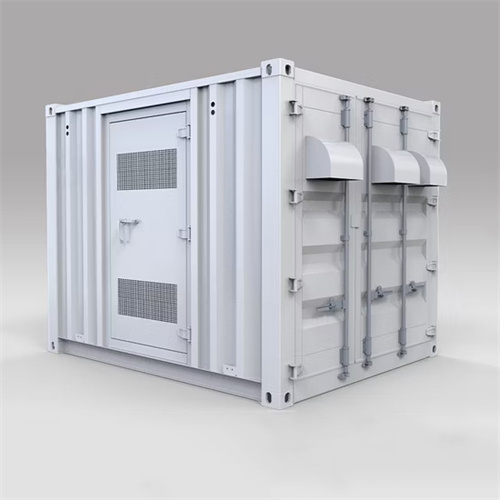About The impact of cascade energy storage
As the photovoltaic (PV) industry continues to evolve, advancements in The impact of cascade energy storage have become critical to optimizing the utilization of renewable energy sources. From innovative battery technologies to intelligent energy management systems, these solutions are transforming the way we store and distribute solar-generated electricity.
When you're looking for the latest and most efficient The impact of cascade energy storage for your PV project, our website offers a comprehensive selection of cutting-edge products designed to meet your specific requirements. Whether you're a renewable energy developer, utility company, or commercial enterprise looking to reduce your carbon footprint, we have the solutions to help you harness the full potential of solar energy.
By interacting with our online customer service, you'll gain a deep understanding of the various The impact of cascade energy storage featured in our extensive catalog, such as high-efficiency storage batteries and intelligent energy management systems, and how they work together to provide a stable and reliable power supply for your PV projects.
6 FAQs about [The impact of cascade energy storage]
Is Cascade phase change energy storage a viable solution?
From the perspective of the system, cascade phase change energy storage (CPCES) technology provides a promising solution. Numerous studies have thoroughly investigated the critical parameters of the energy storage process in the CPCES system, but there is still a lack of relevant discussion on the current status and bottlenecks of this technology.
Does Cascade pbtes improve heat transfer rate?
The cascade PBTES system showed a 6.96% improvement in average heat transfer rate, compared with the non-cascade PBTES system. Similarly, the PBTES system coupled with CPCES was employed in liquid air energy storage, which provided a promising solution to overcome the intermittency of renewable energy system [ 109 ].
What is high voltage cascaded energy storage power conversion system?
High voltage cascaded energy storage power conversion system, as the fusion of the traditional cascade converter topology and the energy storage application, is an excellent technical route for large capacity high voltage energy storage system, but it also faces many new problems.
Is a cascade system better than a non-cascade system?
The total heat storage and release of the cascade system were up to 39.51% and 35.75% higher than the non-cascade system, respectively. Additionally, the worst performance of the cascade system was still better than the best performance of the non-cascade system.
Can Cascade phase change energy technology overcome low-thermal-energy utilization issues?
Aiming to provide an effective solution to overcome the low-thermal-energy utilization issues related to the low thermal conductivity of PCMs, this paper delivers the latest studies of cascade phase change energy technology. In this paper, all studies on CPCES technology up to 2023 have been discussed.
Can a cascade lhtes system improve thermal performance?
Finally, the qualitative conclusion that increasing the inlet fluid temperature and flow rate can improve the thermal performance of the cascade LHTES system was derived, which will provide a theoretical basis for the design of the cascade LHTES system. Fig. 12.
Related Contents
- Stability energy storage device genshin impact
- Genshin impact undersea energy storage
- How big is the impact of energy storage explosion
- Impact of nickel on energy storage
- Impact of superconductor energy storage
- Pneumatic energy storage impact principle
- The impact of photovoltaics on energy storage
- Fixed energy storage device genshin impact
- Positive impact of energy storage industry
- Large energy storage device genshin impact
- Energy storage impact pneumatic wrench
- Cascade power station energy storage plant


